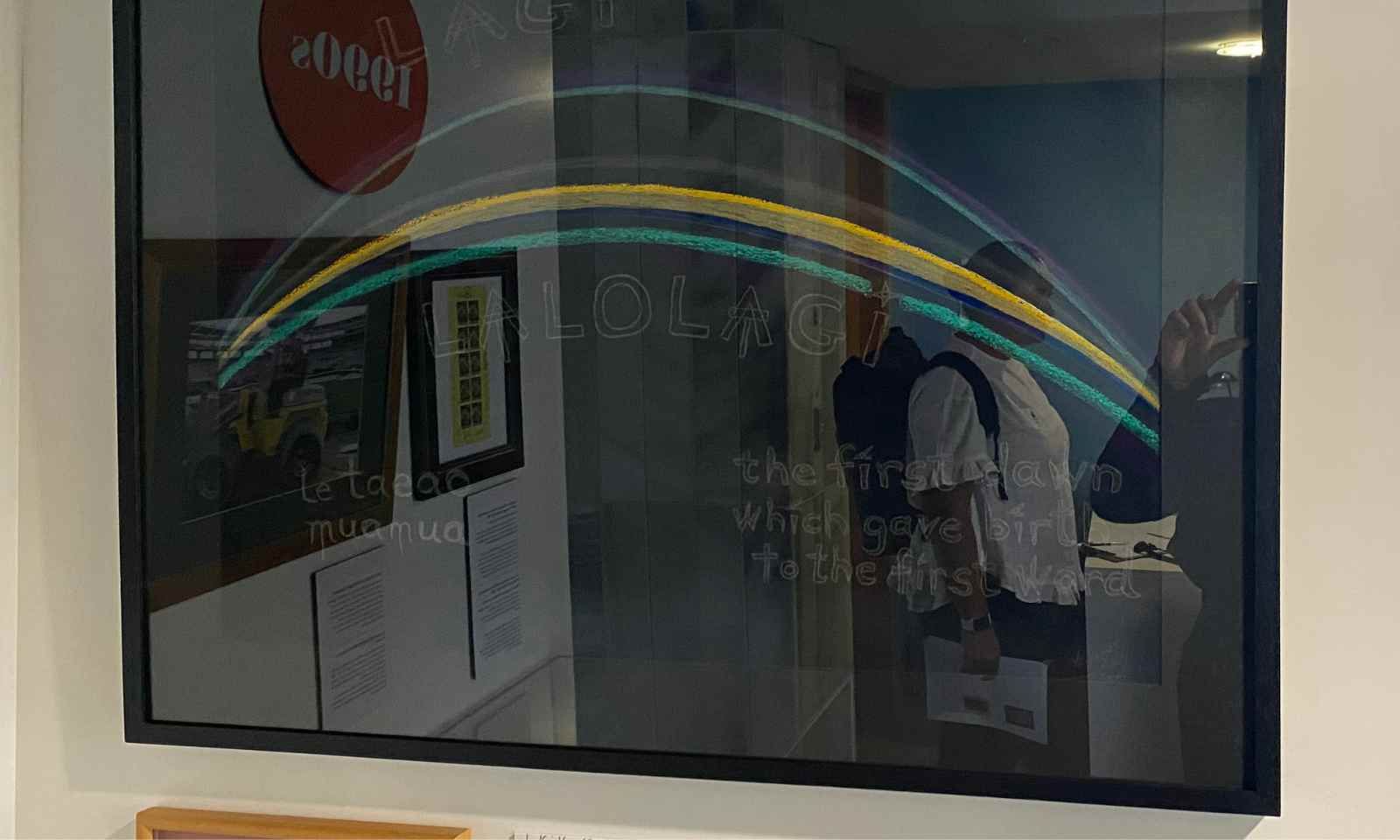

Three Stylised Fish Forms circa 1997 by artist Michel Tuffery hanging on the front wall of the Pacific Select Committee room in parliament.
Photo/ Supplied/ Natasha Fernandez (Parliamentary Collection Art Curator)
Parliament art collection shows the value of diversity
Thanks to Helen Clark donating 600 pieces of Pacific artwork, Parliament's art collection has a wide and varied range of pieces.




Pacific leaders humbled by recognition in New Year 2026 Honours

Pacific Bites: South Auckland weighs in on the top dishes of 2025


‘Love is justice, lived out loud’: Reverend Wayne Toleafoa honoured for service


Pacific leaders humbled by recognition in New Year 2026 Honours

Pacific Bites: South Auckland weighs in on the top dishes of 2025
Eight hundred pieces of vibrant Pasifika art are part of a vast array of Te Moana Nui a Kiwa and foreign works of art housed at parliament.
Parliamentary Collection, Art Curator, Natasha Fernandez has been in her role for the last five and half years and says the formalised collection covers everything from art, photography, historical items and protest materials.
“We probably have about 800, because of that Helen Clark sub-collection.”
Fernandez says the standout piece is from Samoan painter Fatu Feu’u
(Poutasi village, district of Falealili) whose work is part of the general collection.
Feu’u’s work is the Pacific select committee doorway carvings which was specifically commissioned for the Pasifika community.
She says that for years she had thought the Pacific select committee room was a room that allowed for a "show-off" moment for members of parliament but she has since changed her thoughts on it.
“It's not only to showcase and show off our Pasifika community, it's when, we've got a photo set in there of all MPs past and present that identify with their Pacific heritage.”

Lagi by Samoan poet, novelist and artist, Wellington local, Albert Wendt on display at the Te Papakura art space in parliament. Photo/ Merewai Durutalo
Fernandez emphasised the importance of representation in a predominantly Western space like parliament.
“I bring around hundreds of young people from the Pasifika communities, and when they see themselves represented on their wall, it's a, if you can see it, you can be it moment.
"And all of a sudden I realised that I had it wrong, that it's about showing representation.”
She says that it is very important to showcase everyone in a community.
“I think it's really important to showcase everyone in this community, and I do see that Parliament and the buildings are very Western looking. It's very much a nod to colonisation.”
Fernandez says that it’s important to be able to showcase indigenous art.
“It is important to break that slightly and be able to showcase indigenous art, Pasifika art, and really work on that.”
She says part of her role was purchasing art, and she made sure that she filled those gaps to collect.
Fernandez says career highlights involved also being able to showcase and show off lots of different artists.
“The budget we have is quite tiny, so we can only ever really purchase emerging artists or new artists.”
She emphasises that being one of the people who decides on art pieces that go on display carries great importance especially when it comes to New Zealand art.
“And also acknowledge New Zealanders because for many years they weren’t seen.
To me, New Zealanders are the next generation, right?”
Fernandez says back in 2001, they bought four new pieces of work by wahine Maori artists, because sadly up until that point there wasn't any and it’s the same situation with Pasifika art too.
She says most of the significant Pasifika art pieces were brought into parliament by former Prime Minister, Helen Clark.
“I was mentioning where she brought in about six hundred pieces that she transferred to the collection from her travels in the Pacific when she was Prime Minister.”
Fernandez says one of her personal highlights in her role is being able to showcase a collection through the work that they do in that space by showing it to young people.
“I take quite a lot of young people around, which I love doing because they are so engaging, quite excitable, really excited to be here.
“But those are the ones I want to get hold of, and so they can actually interact with art and see how art can change a space.”